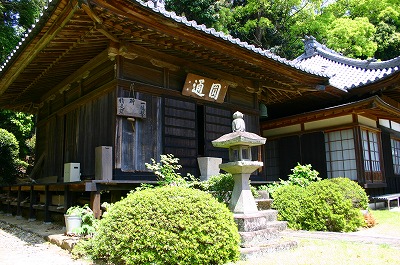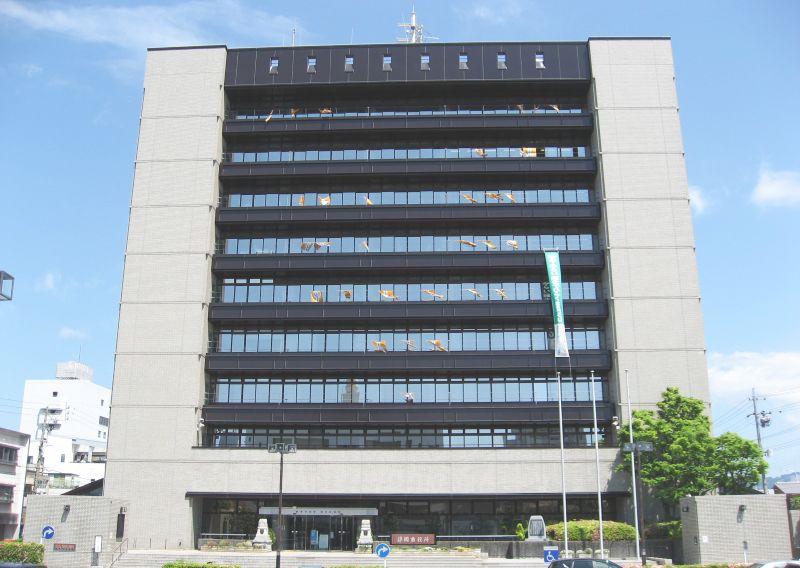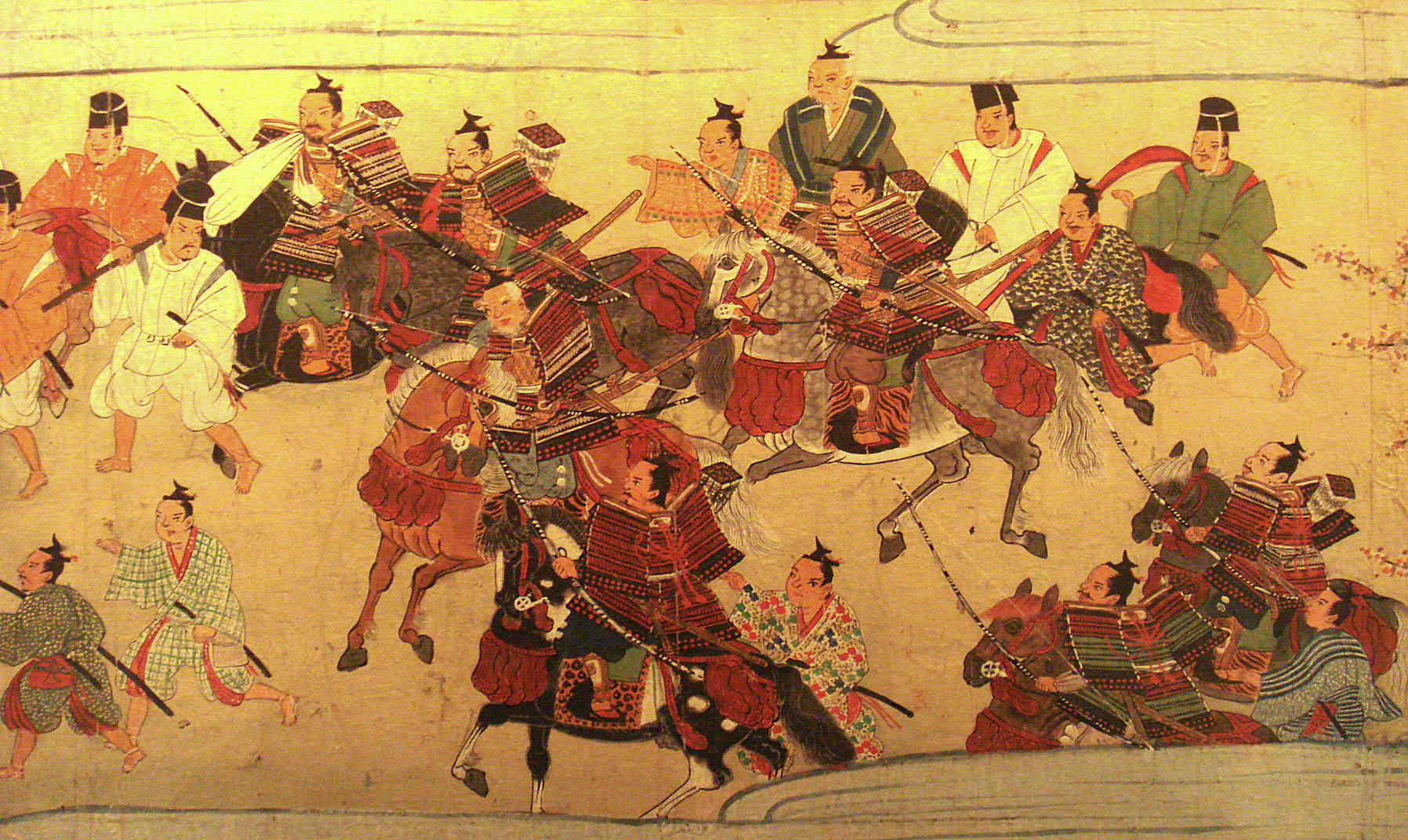|
Shōgen-ji
is a temple of the Myoshin-ji branch of Japanese Rinzai School of Zen Buddhism in Shimizu-ku, Shizuoka, Japan. History According to the oral tradition, Shōgen-ji was initially built as a Tendai temple during Saicho's visit to Eastern Japan in 817. At that time, the temple's name was most likely written differently, i.e. as . Later, in the Kamakura period the temple was transferred to the Rinzai School and renamed to its present characters borrowing the characters of the Jōgen (also read as ''Shōgen'') imperial era (承元, 1207–11). Historically verifiable records indicate that during the Muromachi period the temple was selected as one of regional "peace-protection temples" by the Muromachi bakufu. It was burned to the ground during Takeda Shingen's invasion of Suruga. In the Edo period a Shinto shrine named "Divine Protection Mountain" was added to the rebuilt temple's premises, hence the full title of the temple at present is . The present abbot of the temple ... [...More Info...] [...Related Items...] OR: [Wikipedia] [Google] [Baidu] |
Shimizu-ku, Shizuoka
is the easternmost of the three wards of the city of Shizuoka in Shizuoka Prefecture, Japan. History Shimizu-ku was created on April 1, 2005, when Shizuoka became a city designated by government ordinance (a "designated city"). Its area is almost identical to former Shimizu city, which merged with Shizuoka city on April 1, 2003. Shizuoka annexed the town of Kanbara from Ihara District on March 31, 2006, and the town of Yui on November 1, 2008, adding these former municipalities to Shimizu-ku. Since ancient times, Shimizu thrived as a harbor town due to its good natural harbor. In addition, five post stations of Tōkaidō were located in Shimizu: (Kanbara-juku, Okitsu-juku, Ejiri-juku, and Yui-shuku, all of which brought prosperity to the area during the Edo period. After the Meiji Restoration, an Imperial decree in July 1899 established Shimizu as an open port for trading with the United States and the United Kingdom.US Department of State. (1906) ''A digest of international ... [...More Info...] [...Related Items...] OR: [Wikipedia] [Google] [Baidu] |
Muromachi Period
The is a division of Japanese history running from approximately 1336 to 1573. The period marks the governance of the Muromachi or Ashikaga shogunate (''Muromachi bakufu'' or ''Ashikaga bakufu''), which was officially established in 1338 by the first Muromachi ''shōgun'', Ashikaga Takauji, two years after the brief Kenmu Restoration (1333–1336) of imperial rule was brought to a close. The period ended in 1573 when the 15th and last shogun of this line, Ashikaga Yoshiaki, was driven out of the capital in Kyoto by Oda Nobunaga. From a cultural perspective, the period can be divided into the Kitayama and Higashiyama cultures (later 15th – early 16th centuries). The early years from 1336 to 1392 of the Muromachi period are known as the '' Nanboku-chō'' or Northern and Southern Court period. This period is marked by the continued resistance of the supporters of Emperor Go-Daigo, the emperor behind the Kenmu Restoration. The Sengoku period or Warring States period, which begi ... [...More Info...] [...Related Items...] OR: [Wikipedia] [Google] [Baidu] |
Shimizu Station (Shizuoka)
is a railway station in Shimizu-ku, Shizuoka City, Shizuoka Prefecture, Japan, operated by Central Japan Railway Company (JR Tōkai). Lines Shimizu Station is served by the Tōkaidō Main Line, and is located 169.0 kilometers from the starting point of the line at Tokyo Station. Station layout The station has a single island platform serving Track 1 and Track 2, connected to the station building by a footbridge. The station building has automated ticket machines, TOICA automated turnstiles and a staffed ticket office. Platforms Adjacent stations , - !colspan=5, Central Japan Railway Company Station history Shimizu Station first opened as on February 1, 1889, when the section of the Tōkaidō Main Line connecting Shizuoka with Kōzu was completed. It was named after Ejiri-juku, the 18th station of the historical Tōkaidō. In 1934 it was renamed Shimizu Station. From 1916 the Shimizukō Line ran as a branch line from Shimizu Station through the industrial port ... [...More Info...] [...Related Items...] OR: [Wikipedia] [Google] [Baidu] |
Okitsu Station
is a railway station in Shimizu-ku, Shizuoka City, Shizuoka Prefecture, Japan, operated by Central Japan Railway Company (JR Tōkai). Lines Okitsu Station is served by the Tōkaidō Main Line, and is located 164.3 kilometers from the starting point of the line at Tokyo Station. Station layout Okitsu Station has a single side platform serving Track 1 and an island platform serving Track 2 and Track 3, connected to the station building by a footbridge. Track 3 is used for terminating services arriving from east and west, and also for services departing in both directions. The station building has automated ticket machines, TOICA automated turnstiles and a staffed ticket office. Platforms Adjacent stations , - !colspan=5, Central Japan Railway Company Station history Okitsu Station was opened on 1 February 1889 when the section of the Tōkaidō Main Line connecting Shizuoka with Kōzu was completed. It is located near the site of Okitsu-juku on the old Tōkaidō. ... [...More Info...] [...Related Items...] OR: [Wikipedia] [Google] [Baidu] |
Shinto
Shinto () is a religion from Japan. Classified as an East Asian religion by scholars of religion, its practitioners often regard it as Japan's indigenous religion and as a nature religion. Scholars sometimes call its practitioners ''Shintoists'', although adherents rarely use that term themselves. There is no central authority in control of Shinto, with much diversity of belief and practice evident among practitioners. A polytheistic and animistic religion, Shinto revolves around supernatural entities called the . The are believed to inhabit all things, including forces of nature and prominent landscape locations. The are worshiped at household shrines, family shrines, and ''jinja'' public shrines. The latter are staffed by priests, known as , who oversee offerings of food and drink to the specific enshrined at that location. This is done to cultivate harmony between humans and and to solicit the latter's blessing. Other common rituals include the dances, rites of pass ... [...More Info...] [...Related Items...] OR: [Wikipedia] [Google] [Baidu] |
Edo Period
The or is the period between 1603 and 1867 in the history of Japan, when Japan was under the rule of the Tokugawa shogunate and the country's 300 regional '' daimyo''. Emerging from the chaos of the Sengoku period, the Edo period was characterized by economic growth, strict social order, isolationist foreign policies, a stable population, perpetual peace, and popular enjoyment of arts and culture. The period derives its name from Edo (now Tokyo), where on March 24, 1603, the shogunate was officially established by Tokugawa Ieyasu. The period came to an end with the Meiji Restoration and the Boshin War, which restored imperial rule to Japan. Consolidation of the shogunate The Edo period or Tokugawa period is the period between 1603 and 1867 in the history of Japan, when Japan was under the rule of the Tokugawa shogunate and the country's regional '' daimyo''. A revolution took place from the time of the Kamakura shogunate, which existed with the Tennō's court, to the Tok ... [...More Info...] [...Related Items...] OR: [Wikipedia] [Google] [Baidu] |
Suruga Province
was an old province in the area that is today the central part of Shizuoka Prefecture. Suruga bordered on Izu, Kai, Sagami, Shinano, and Tōtōmi provinces; and was bordered by the Pacific Ocean through Suruga Bay to the south. Its abbreviated form name was . History Early period Suruga was one of the original provinces of Japan established in the Nara period under the Taihō Code. The original capital of the province was located in what is now Numazu, which also had the ''Kokubun-ji'' and the Ichinomiya ( Mishima Taisha) of the province. Under the ''Engishiki'' classification system, Suruga was ranked as a "major country" (上国), and was governed by a ''Kuni no miyatsuko'' and under the ''ritsuryō'' system was classed as a "middle country" (中国) In a 680 AD cadastral reform, the districts forming Izu Province were administratively separated from Suruga, and the provincial capital was relocated to the right bank of the Abe River in what is now Shizuoka City. Medi ... [...More Info...] [...Related Items...] OR: [Wikipedia] [Google] [Baidu] |
Takeda Shingen
, of Kai Province, was a pre-eminent ''daimyō'' in feudal Japan. Known as the "Tiger of Kai", he was one of the most powerful daimyō with exceptional military prestige in the late stage of the Sengoku period. Shingen was a warlord of great skill and military leadership. Name Shingen was called "Tarō" (a commonly used pet name for the eldest son of a Japanese family) or Katsuchiyo (勝千代) during his childhood. When he celebrated his coming of age, he was given the formal name Harunobu (晴信), which included a character from the name of Ashikaga Yoshiharu (足利義晴), the 12th Ashikaga ''shōgun''. It was a common practice in feudal Japan for a higher-ranked warrior to bestow a character from his own name to his inferiors as a symbol of recognition. From the local lord's perspective, it was an honour to receive a character from the shogunate, although the authority of the latter had greatly degenerated in the mid-16th century. Both the Ashikaga and the Takeda cl ... [...More Info...] [...Related Items...] OR: [Wikipedia] [Google] [Baidu] |
Muromachi Bakufu
The is a division of Japanese history running from approximately 1336 to 1573. The period marks the governance of the Muromachi or Ashikaga shogunate (''Muromachi bakufu'' or ''Ashikaga bakufu''), which was officially established in 1338 by the first Muromachi ''shōgun'', Ashikaga Takauji, two years after the brief Kenmu Restoration (1333–1336) of imperial rule was brought to a close. The period ended in 1573 when the 15th and last shogun of this line, Ashikaga Yoshiaki, was driven out of the capital in Kyoto by Oda Nobunaga. From a cultural perspective, the period can be divided into the Kitayama and Higashiyama cultures (later 15th – early 16th centuries). The early years from 1336 to 1392 of the Muromachi period are known as the '' Nanboku-chō'' or Northern and Southern Court period. This period is marked by the continued resistance of the supporters of Emperor Go-Daigo, the emperor behind the Kenmu Restoration. The Sengoku period or Warring States period, which beg ... [...More Info...] [...Related Items...] OR: [Wikipedia] [Google] [Baidu] |
Kamakura Period
The is a period of Japanese history that marks the governance by the Kamakura shogunate, officially established in 1192 in Kamakura by the first ''shōgun'' Minamoto no Yoritomo after the conclusion of the Genpei War, which saw the struggle between the Taira and Minamoto clans. The period is known for the emergence of the samurai, the warrior caste, and for the establishment of feudalism in Japan. During the early Kamakura period, the shogunate continued warfare against the Northern Fujiwara which was only defeated in 1189. Then, the authority to the Kamakura rulers waned in the 1190s and power was transferred to the powerful Hōjō clan in the early 13th century with the head of the clan as regent (Shikken) under the shogun which became a powerless figurehead. The later Kamakura period saw the invasions of the Mongols in 1274 and again in 1281. To reduce the amount of chaos, the Hōjō rulers decided to decentralize power by allowing two imperial lines – Northern and Southern ... [...More Info...] [...Related Items...] OR: [Wikipedia] [Google] [Baidu] |
Shizuoka, Shizuoka
is the capital city of Shizuoka Prefecture, Japan, and the prefecture's second-largest city in both population and area. It has been populated since prehistoric times. the city had an estimated population of 690,881 in 106,087 households, and a population density of . Overview The city's name is made up of two ''kanji'', 静 ''shizu'', meaning "still" or "calm"; and 岡 ''oka'', meaning "hill(s)". In 1869, Shizuoka Domain was first created out of the older Sunpu Domain, and that name was retained when the city was incorporated in 1885. In 2003, Shizuoka absorbed neighboring Shimizu City (now Shimizu-ku, Shizuoka, Shimizu Ward) to create the new and expanded city of Shizuoka, briefly becoming the largest city by land area in Japan. In 2005, it became one of Japan's "Cities designated by government ordinance of Japan, designated cities". Cityscapes File:Sunpu-castle tatsumi-yagura.JPG, Sunpu Castle(2014) File:Shizuoka Station 201016a.jpg, Central Business District, CBD of S ... [...More Info...] [...Related Items...] OR: [Wikipedia] [Google] [Baidu] |






